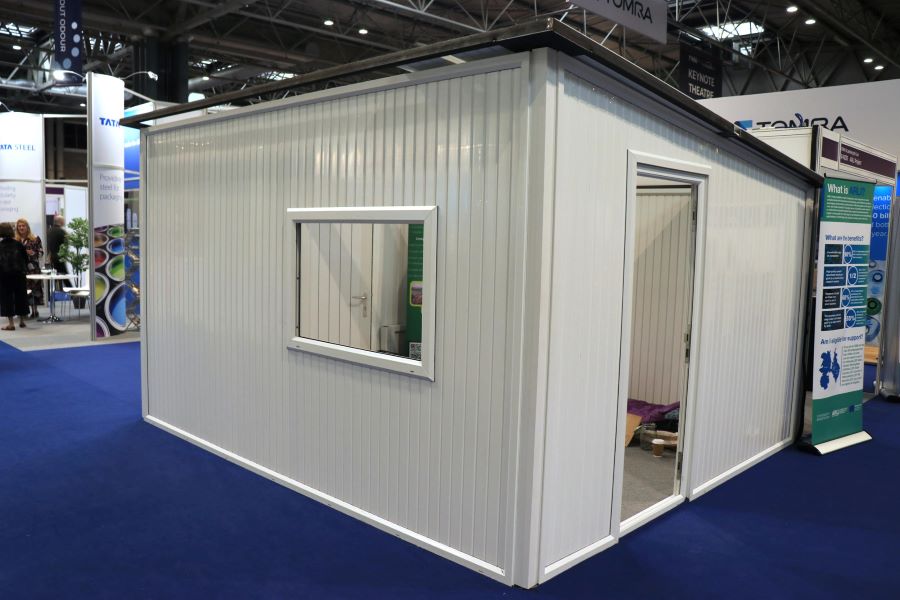
The shelters can house four people for 10-plus years. | Courtesy of University of Birmingham
University of Birmingham researchers recently debuted a temporary shelter made from 100% recycled materials, meant to help refugees or others in need.
Sustainable engineering experts in the School of Engineering worked with Birmingham-based company Suscons for 18 months to develop the Suscons emergency relief shelter.
Each unit is made from about 1,014 pounds of recycled plastic and can hold four people, according to a University of Birmingham press release. The doors and windows are lockable, providing more security than traditional tent shelters, and they can also be adapted to form mobile medical units, with a minimum lifespan of 10 years continual use.
According to the United Nations High Commissioner for Refugees (UNHCR), 32.5 million of the 103 million forcibly displaced people worldwide are refugees, and the need for emergency relief shelters increased recently by at least 5.4 million due to the conflict in Ukraine.
UNHCR tents are designed for an 18-month life, but are often used for longer periods of time. Tents have limited head height and do not provide security, the press release noted.
The Suscons shelters meet United Nations requirements and are delivered as a flat-pack in standard freight containers. They can be put up quickly without special skills or tools.
“If the units were to replace 1% of the shelter market – estimated to be six million shelters per year – that would be 42,000 units taking over 19,000 tonnes of waste plastic out of the waste stream each year,” the press release noted.
Peter Braithwaite, director of engineering sustainability at the Birmingham Centre for Resilience Research and Education, said there has been high interest in the shelter from relief agencies and at the 2023 Dubai International Humanitarian Aid and Development conference.
“This is high-quality emergency shelter for immediate relief which can become a transitional shelter with the addition of a sanitary/kitchen module – durable, safe accommodation delivered in a flat pack, easily erected with minimal tools,” he added. “After use, the shelters can be shredded and turned into new products, with no waste generated.”
While the Suscons shelter is more expensive than a tent, Braithwaite said he hopes to shift to a model of selling or leasing the shelters based on whole life costs to encourage relief agencies to start using the shelters in disaster zones.
More stories about Technology
- RIT researchers develop AI-based textile recycling system
- Industry nuance is key in adopting emerging technology
- Google, Dow partner on AI to identify recyclables